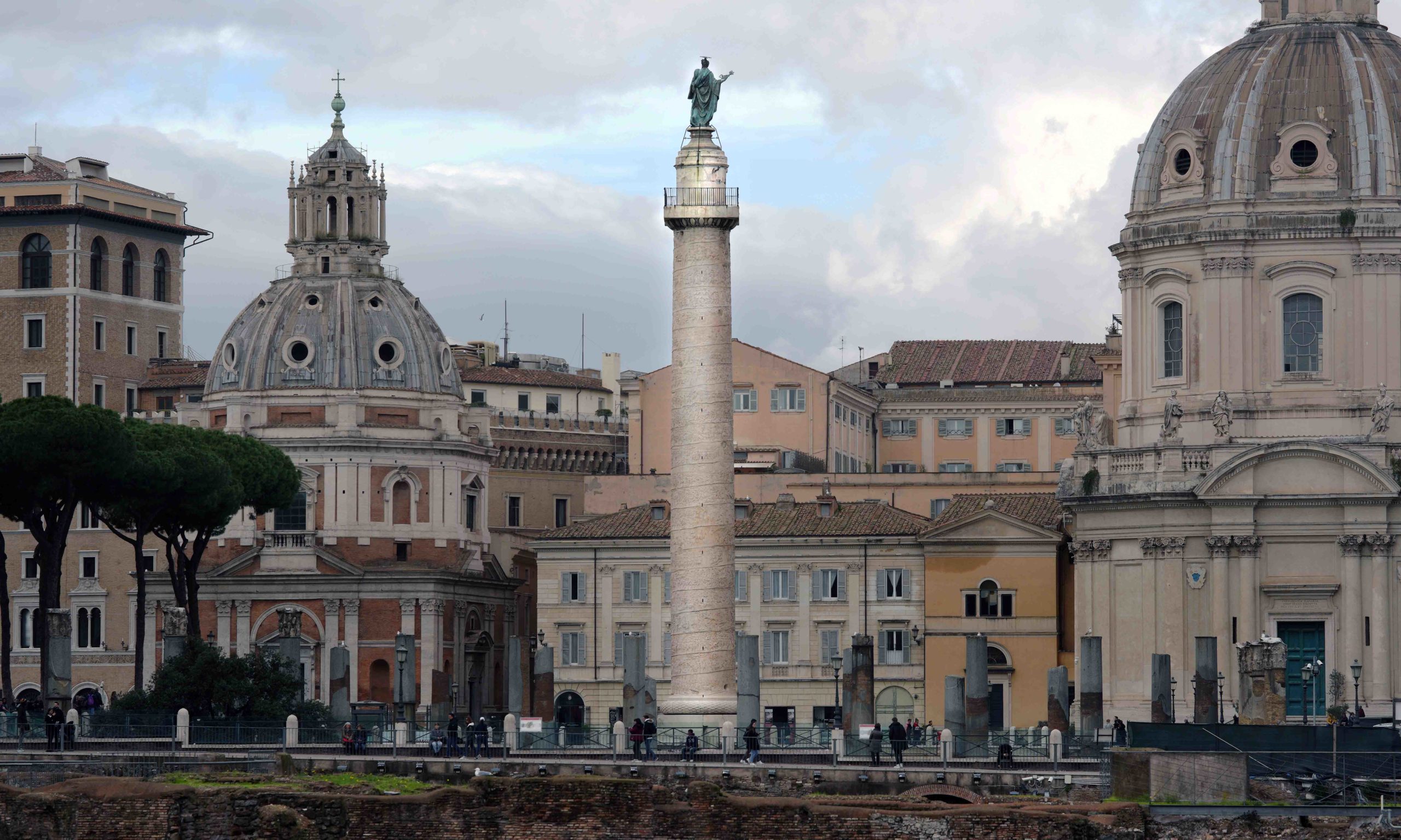Past Event: Wednesday, Nov.03.2021

In this Smarthistory conversation, Dr. Jeffrey Becker will discuss strategies on how to approach the Forum and Column of Trajan—the final and largest of Rome’s complex of so-called “Imperial fora,” or public urban squares for civic and ritual business—in the classroom.
Teaching Trajan
The monuments in brief
- “Never again to be imitated by mortal men”
- In the mid-4th century, Constantius II, while visiting Rome, was amazed by the huge equestrian statue of Trajan and by the surrounding buildings: “But when he came to the Forum of Trajan, a construction unique under the heavens, as we believe, and admirable even in the unanimous opinion of the gods, he stood fast in amazement, turning his attention to the gigantic complex about him, beggaring description and never again to be imitated by mortal men.”(Ammianus Marcellinus 16.14)
- Themes
- Monumentality (monumentum [neuter], monumenti) “reminder, memorial”
- Commemoration
- Collective memory
- Historical narrative
- Forum (and markets) of Trajan
- Dacian wars (101–102, 105–106 CE)
- Inaugurated in 113 CE
- Quirinal and Capitoline hills
- Forum measures 300 x 185 m; exedrae
- Final “Imperial forum” complex
- Basilica Ulpia, 117 x 55 m
- Column of Trajan
- Dedicatory inscription: “The Senate and people of Rome [give or dedicate this] to the emperor Caesar, son of the divine Nerva, Nerva Traianus Augustus Germanicus Dacicus, pontifex maximus, in his 17th year in the office of tribune, having been acclaimed 6 times as imperator, 6 times consul, father of his country (pater patriae), to demonstrate of what great height the hill [was] and place [that] was removed for such great works.”
-
- Dimensions:
- 29 blocks of Luna marble
- 25 to 77 tons
- 38.4 m tall
- Helical frieze of 190 m with ca. 2,500 figures
- Wraps 23 times around
- Trajan appears 59 times.
- Visual synopsis of the Dacian Wars (101–102, 105–106 CE)
- 29 blocks of Luna marble
- Dimensions:
Approaching the monuments – opportunities and challenges
- Historical narration (historical relief)
- Commemoration, collectivity
- Themes – points of view in public art – victory vs. defeat – imperialism – the defeated
Monuments in context
- Confronting the unfamiliar with the familiar
- What (and whom) do we commemorate – contextualizing monumentality
Other online resources
Trajan’s Column in Rome (2021, Roger B. Ulrich)
The McMaster Trajan Project (hosted by Stoa.org)
Trajan’s Column – Cichorius Plates at Wikimedia Commons
Trajan’s Column (University of St Andrews)
Building an Ancient, Mysterious Monument (Amazing Stop-Motion) | National Geographic Mar 25, 2015
Contributors
Dr. Jeffrey Becker
Smarthistory Contributing Editor for Ancient Roman and Etruscan art, Dr. Jeffrey Becker’s research is focused on Italo-Roman architecture and urbanism but is interested in urbanism across the Mediterranean basin, as a well as in building techniques, city planning, Roman villas, and archaeological theory. Becker was trained in Classics at the University of North Carolina at Chapel Hill (M.A., Ph.D.) and has extensive experience as a classroom instructor and as an excavator, having worked for a number of years in and around Rome.
Learn more about Dr. Jeffrey Becker
